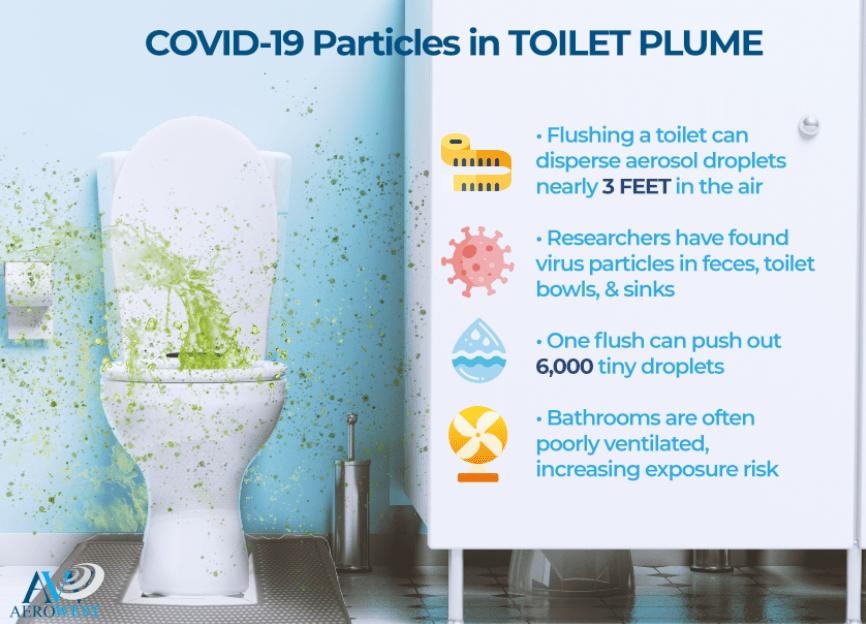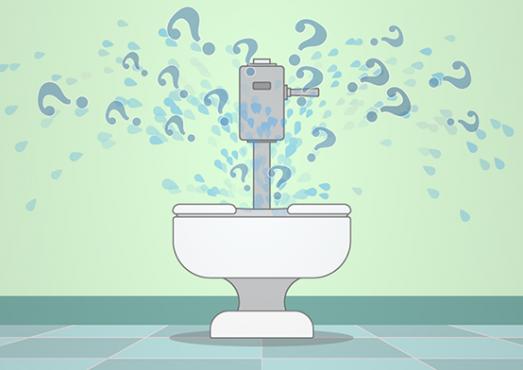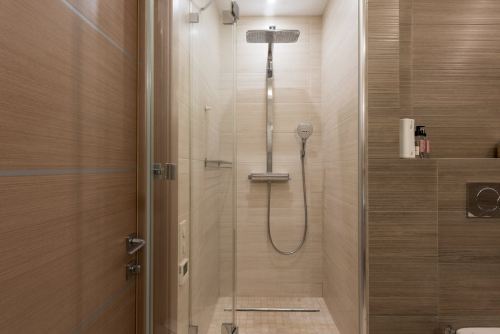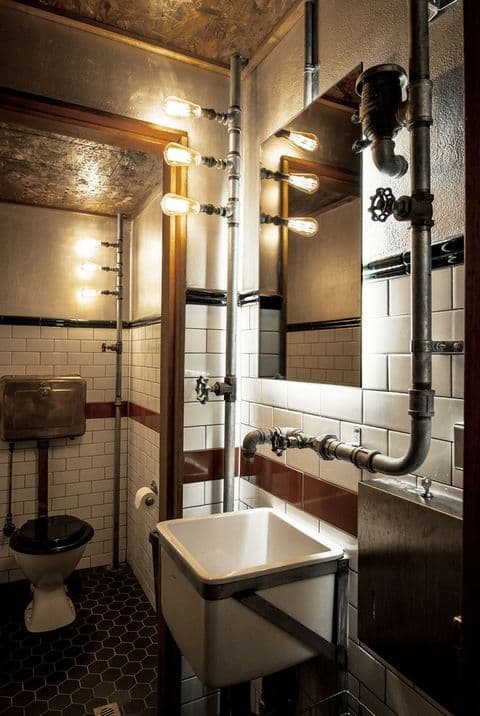Why we need to know about toilet plume
While the numbers fluctuate, it is estimated that in the U.S., more than 40%of all the deaths from COVID-19 are from people living in long-term and senior care facilities and nursing homes. In Canada, it’s even worse, where more than 60%of all deaths are among those living in senior care facilities.
This number becomes even more staggering when you realize that, according to the Centers for Disease Control and Prevention, only about 0.6% of this country’s total population lives in nursing homes or long-term care locations.
Turning these numbers around has become an exceedingly difficult, but necessary, challenge for administrators. Most are looking into every possible way the infection spreads in their facilities along with ways to stop it.
Resident and common-area bathrooms in long-term care facilities may get overlooked. I am sure that many administrators reading this believe they are already taking steps to clean and sanitize their facility bathrooms. And I am sure they are.
However, we need to address a problem area that may be overlooked: toilet plume.
Let’s start by defining toilet plume. When a toilet is flushed, it causes turbulence in the toilet bowl. This turbulence turns into an aerosol spray, causing droplets to become airborne. If waste in the bowl is contaminated with COVID, then so are the droplets. This was validated by a study in the journal, Physics of Fluids, June 2020,which did report finding traces of the COVID pathogens in human waste. Further, other studies have found that toilet plume could stay airborne for as long as three minutes and rise from three to 15 feet into the air. *
This increases the chances it may be inhaled. Further, once the droplets fall on surfaces, there is a good chance residents and staff may touch these pathogens and increase the chances of coming down with the virus.
While scientists have not verified that bathrooms, especially shared bathrooms, are transmission points for the disease, in a pandemic as severe as COVID, this must be considered.
“The aerosols generated by toilets are something that we’ve known about for a while,” says Joshua L. Santarpia, a professor of pathology and microbiology at the University of Nebraska Medical Center who was not involved in the research. “This study [mentioned earlier] adds further evidence that everyone needs to take better action” … and “keep bathrooms clean.”
How can we take “better action” to eliminate the problems caused by toilet plume and “keep bathrooms clean”? Among actionable items are the following:

Remove air from private and common area bathrooms.
Earlier, we mentioned that aerosol droplets could remain airborne for up to three minutes. Some studies report that these droplets can remain airborne even longer, as long as 15 minutes. To remove them so there is less chance they can be inhaled, we must adjust ventilation systems so that they increase the amount of air removed from the bathroom.
Eliminate auto-flush toilets.
Toilets that flush automatically should not be installed in private or public bathrooms in long-term/senior care facilities. They tend to have random flushes, increasing the chances that toilet plume will be inhaled.
Install toilets with automatic lids.
If you haven’t noticed, most commercial toilets no longer have lids. Removed primarily to cut costs, this “open door policy” allows toilet plume to be released from the toilet quickly. Lids should be installed on all toilets. Further, because long-term care residents and seniors may forget to pull down the lid before flushing, manufacturers have developed lids that automatically go down after the toilet is used and before flushing.
Walls, floors and surfaces
The two suggestions above focus on preventing the inhalation of toilet plume. But what about aerosols that land on surfaces? Housekeeping staff have two key options:
1. Wipe down floors, walls, and surfaces with a cleaning solution and then a disinfectant (two steps) each time the bathroom is cleaned, using fresh microfiber mop heads and towels for each bathroom. Further, use fresh cleaning solution in each bathroom. This can slow down bathroom cleaning considerably, but please remember, 40 percent of all COVID deaths in the U.S. occur in long-term/senior care locations. If these are the only cleaning tools in use, we need to take the time to do this.
2. Another option is to use what are called no-touch, spray-and-vac, or dispense-and-vac cleaning systems. This is a faster cleaning option, and essentially these systems all work the same way. They are single, multi-purpose machines that apply cleaning solution and disinfectant to surfaces in one step. They then gently but effectively rinse off surfaces, with moisture, soils, and pathogens vacuumed up as the final step. Originally made to clean larger areas, smaller machines are now available that work well in small to medium-size bathrooms.
Finally, some experts are now suggesting that restrooms in a post-COVID world be totally redesigned. More contactless dispensers and controls are needed, and floors and walls need to be less porous or non-porous.This will help eliminate “safe harbors” for pathogens, making it easier to remove them.
Marc Ferguson is the vice president of Global Sales for Kaivac, developer of the No-Touch Cleaning® system and the OmniFlex™ Crossover Cleaning system. He can be reached via his company website, www.kaivac.com or by email, info@kaivac.com.
“Flushing the Toilet May Fling Coronavirus Aerosols All Over,” by Knvul Sheikh, The New York Times, June 17, 2020



